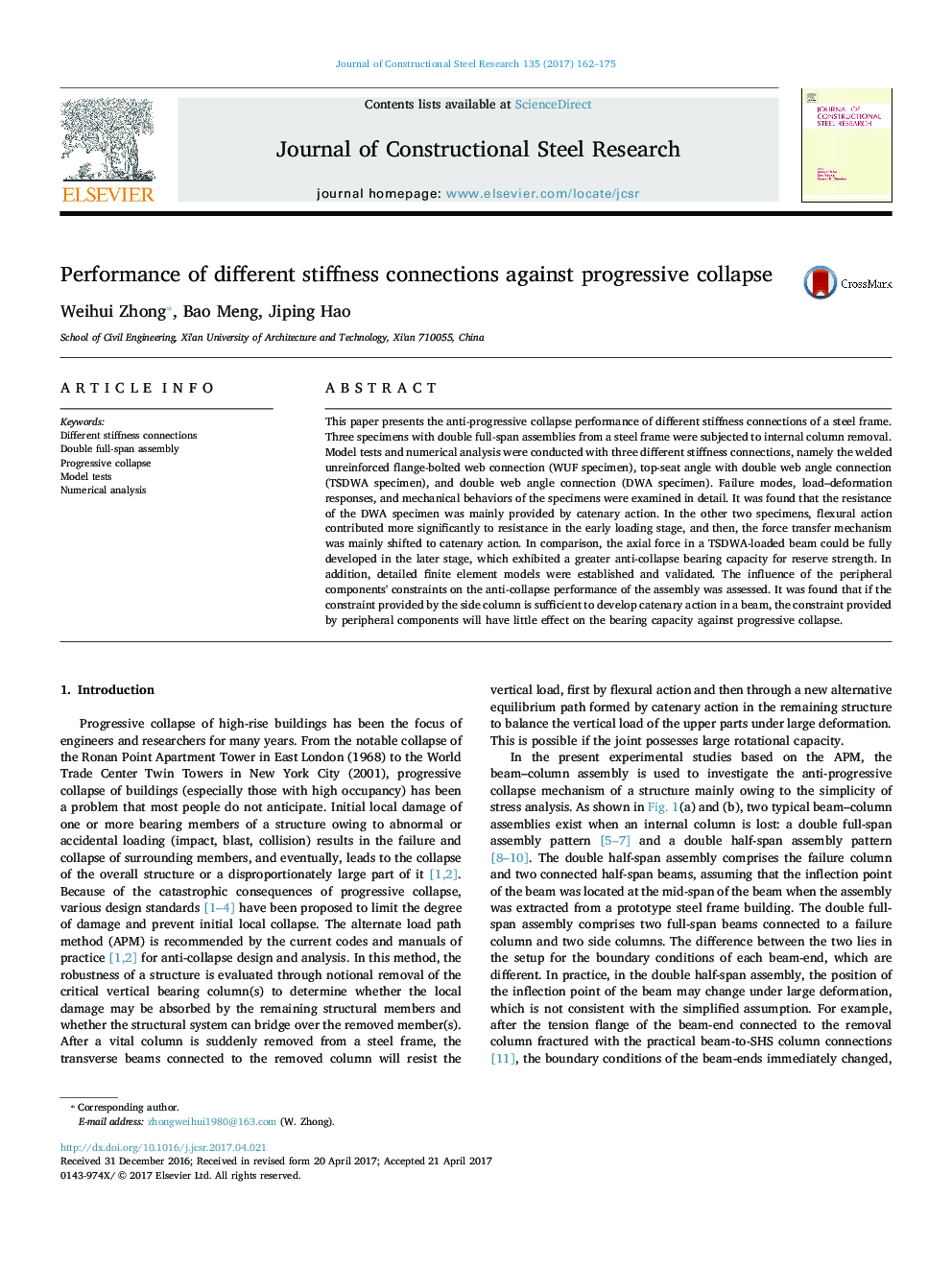| Article ID | Journal | Published Year | Pages | File Type |
|---|---|---|---|---|
| 4923444 | Journal of Constructional Steel Research | 2017 | 14 Pages |
Abstract
This paper presents the anti-progressive collapse performance of different stiffness connections of a steel frame. Three specimens with double full-span assemblies from a steel frame were subjected to internal column removal. Model tests and numerical analysis were conducted with three different stiffness connections, namely the welded unreinforced flange-bolted web connection (WUF specimen), top-seat angle with double web angle connection (TSDWA specimen), and double web angle connection (DWA specimen). Failure modes, load-deformation responses, and mechanical behaviors of the specimens were examined in detail. It was found that the resistance of the DWA specimen was mainly provided by catenary action. In the other two specimens, flexural action contributed more significantly to resistance in the early loading stage, and then, the force transfer mechanism was mainly shifted to catenary action. In comparison, the axial force in a TSDWA-loaded beam could be fully developed in the later stage, which exhibited a greater anti-collapse bearing capacity for reserve strength. In addition, detailed finite element models were established and validated. The influence of the peripheral components' constraints on the anti-collapse performance of the assembly was assessed. It was found that if the constraint provided by the side column is sufficient to develop catenary action in a beam, the constraint provided by peripheral components will have little effect on the bearing capacity against progressive collapse.
Related Topics
Physical Sciences and Engineering
Engineering
Civil and Structural Engineering
Authors
Weihui Zhong, Bao Meng, Jiping Hao,
